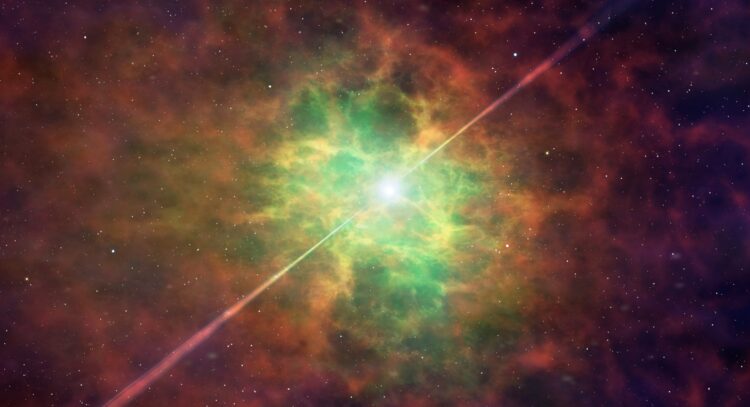What is a Pulsar?
A pulsar is like a cosmic lighthouse. It is a neutron star, the collapsed remnant of a massive star that has exploded in a supernova. These objects are incredibly dense and are about the size of a city, yet have a mass greater than that of the Sun. What’s fascinating about pulsars is that they emit beams of electromagnetic radiation from their magnetic poles. As they rotate, these beams sweep through space like the lights of a lighthouse, creating pulses of light and radio waves that we can detect here on Earth.
Pulsars are like cosmic clocks. They spin at astonishing speeds, from a few times per second to hundreds of times per second. This stable rotation allows astronomers to use them to measure time and study gravity under extreme conditions. There are various types of pulsars, including those that primarily emit radio waves and those that are best seen in X-rays. Moreover, pulsars have practical applications: they have been used in experiments to test Einstein’s theory of relativity and in the navigation of spacecraft.
If we had a teaspoonful of pulsar matter?

Now, imagine if we could have a teaspoon of pulsar matter. It would be an impossible and catastrophic experience. The matter of a pulsar is extremely dense; a teaspoonful would weigh around a billion tons. If somehow we could have it on Earth, its gravity would be so intense that it would warp the space and time around it, and emit lethal levels of radiation. Fortunately, this is just a hypothesis and not something we can or would want to experience.
Conclusion
Pulsars are more than just simple points of light in the night sky. They are natural laboratories that allow us to study the laws of physics under extreme conditions.











